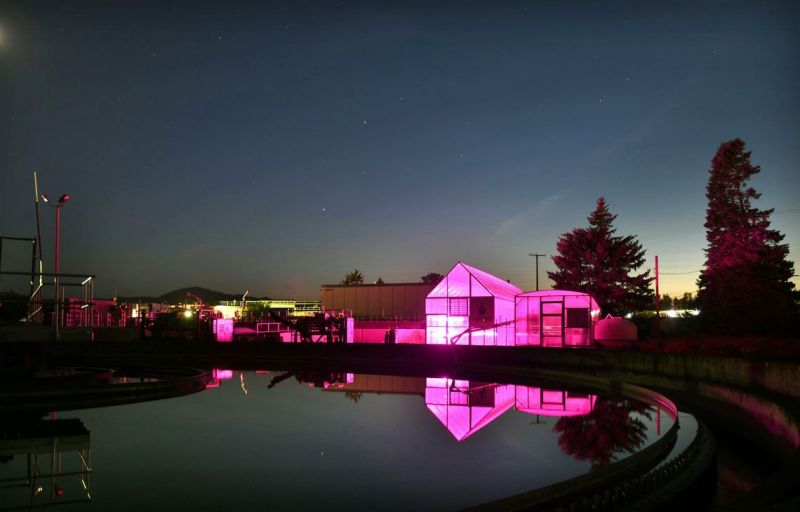Using Wastewater and Algae for Biofuel and Fertilizer
Published on by Water Network Research, Official research team of The Water Network in Technology
Clearas Water Recovery has developed a patented process to use algae to remove nitrogen and phosphorus from public wastewater treatment plants.
This way they are keeping waterways from being inundated with the compounds that starve fish and plant life of oxygen. In turn, the algae can be sold to other companies for fertilizer, biofuels and other uses.

The Clearas Water Recovery greenhouse glows purple from the LED grow lights for the algae held in glass tubes near the settling ponds in Missoula’s wastewater treatment facility. Clearas has developed a patented process to use the algae to remove nitrogen and phosphorus from the plant’s wastewater, keeping waterways, like Missoula’s Clark Fork River, free from the compounds that starve fish and plant life of oxygen by feeding algae in the river. (Tommy Martino / Tommy Martino/The Missoulian via AP)
Think of it as high tech farming.
As the global population skyrockets, nitrogen and phosphorus pollution is becoming a significant environmental concern. Often referred to as “nutrient loading,” these two elements cause algal blooms in lakes and rivers that create “dead zones” that devastate vegetation and animals.
Clearas officials say they have found a way to harness Mother Nature’s own solution to nutrient loading in a different way, making it a beneficial process that makes money instead of an ecological nightmare.
Sewage contains high levels of nitrogen and phosphorus, and those two elements happen to be what algae, the fastest-growing plant on the planet, likes to eat.
Phosphorus and nitrogen are in demand from the agriculture sector for their use as fertilizers. So rather than having life-killing algae in nature’s waterways, the nutrients can be put to use in corn fields.
“I think the simplest way to describe what we do is to say that we take harmful constituents out of the wastewater prior to discharge into our rivers, lakes and streams, and we do it biologically sustainably,” explained company CEO Jordan Lind.
There are other technologies for removing those nutrients, but they often involve chemical treatment.
Clearas formed as a company when algae farmers in the Bitterroot Valley wanted phosphorus and nitrogen from Missoula’s wastewater treatment facility to feed their biofuel. Lind recalls that the head of the wastewater facility told them they could take as much wastewater as they wanted for free, a much better alternative than buying synthetic nitrogen.
It was a “eureka” moment. Kevin McGraw, the company’s co-founder and operations manager, realized that they could develop a technology to harness wastewater’s nutrients to grow a valuable product while doing public utilities a favor.
“What they need to get rid of, our plants require,” Lind explained.
The company developed a testing facility at Missoula’s wastewater treatment plant on North Reserve. A series of tubes feed 15,000 gallons of wastewater per day through algae and return it to the Clark Fork River much cleaner than it was before.
The company recently landed a contract to implement their Advanced Biological Nutrient Recovery technology at a Utah municipality called the South Davis Sewer District, which will be a 4-million-gallon-per-day system.
Read more: The Spokesman
Media
Taxonomy
- Treatment
- Technology
- Biological Treatment
- Algae
- Water Supply
- Water Management
- Algae Treatment